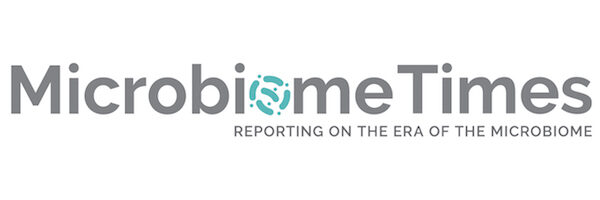
Regulatory requirements are not yet clearly defined due to the relative novelty of LBPs. In addition, there is an inherent lack of straightforward biomarkers in microbiome research, which can make it problematic to link LBPs to medically relevant endpoints. Despite these unclarities, the right approach can pave the way to regulatory approval. Detailed documentation including a scientifically sound reasoning behind the methods used to show product quality, safety and efficacy are needed where there is uncertainty. We summarise the most important considerations for the successful regulatory approval of LBPs.
Guidance documentation for Live Biotherapeutic Products in the USA and EU
While the definition of a probiotic according to the FAO and WHO given in 2001, “live microorganisms which … confer a health benefit on the host” is broad enough to apply to live biotherapeutics, the general public understands a probiotic to be a food or food supplement. The current separation between foods, dietary supplements and pharmaceutical products is also applicable to the therapeutic use of live microorganisms, hence a need for more specific requirements according to regulatory bodies.
The US Food and Drug Administration was first to provide a draft guidance in 2010 for microorganisms intended to prevent or treat disease. It was published in 2012 and updated again in 2016. This officially created the LBP category. The European Pharmacoepia Commission followed suit in 2019 with the implementation of a general monograph and two chapters containing harmonized requirements for the use of LBPs and assessment of their microbiological purity. The European Legislature states that LBPs must comply with legislation for biological medicinal products, in addition to these more specific guidelines for LBPs.
In addition, many international guidelines for non-LBPs are also appropriate. These include ICH GCP E6 for performing clinical efficacy trials, the Committee for Medicinal Product for Human use (CHMP) Guideline on strategy to identify and mitigate risks for first-in-human and early clinical trials with investigational medicinal products, and the CHMP guideline on Human Cell-Based Medicinal Products. While not binding from a regulatory point of view, they provide a useful framework for manufacturers to ensure products meet internationally recognized quality, efficacy and safety standards.
The Risk-Benefit Balance of LBPs
Regulatory authorities in the USA and EU are interested in knowing how well the benefits to an LBP weigh up against its risks. A “three pillars” approach is applied: the product must be of an appropriate quality, the safety of the product needs to be tested and risks identified, and a clinical benefit must be shown. It is important to consider these aspects of regulatory approval in an early stage of new product development to avoid making costly changes closer to marketing application.
Both clinical and non-clinical studies provide an extensive body of evidence to support the approval of LBPs for therapeutic product applications. In-house studies, the general scientific literature, omics technologies and strain-specific information all can contribute to the risk-benefit analysis. The design of these studies may not be appropriate for LBPs; for example, GMP practices aim to eliminate microbes from the final product, however LBPs require live microbes to be present in the final product. Therefore the reasoning behind the selection of study designs for regulatory approval needs to be justified and documented where these deviate from norms for non-living therapeutic products.
Establishing the Quality of Live Biotherapeutic Products
Existing guidelines for ensuring product quality for pharmaceutical products are broadly applicable for LBPs. For example, the ICH Q11 guideline on the development and manufacture of drug substances contains a relevant approach to the development of LBPs. This approach is a “quality by design” concept, which should be kept in mind at all stages of the LBP development process, as is done with new medicines. General principles such as establishing a Quality Target Product Profile and Critical Quality Attributes for a product are essential for LBPs. Where the situation differs from existing guidelines for pharmaceutical products, due to the fundamental nature of LBPs, the reasons for this need to be documented fully.
A challenge for LBPs compared to drugs is the high batch-to-batch variation found in microbial cultures. Processes must be designed to take into account expected variations arising from the growth of live cultures, which also needs to be reflected in documentation about the process that is required for regulatory submission. In addition to standard tests for biomass content, microbial contaminants, viability and assessment of cell activity, genomics can supplement assessment of quality through strain identification and characterisation.
Also relevant for LBPs are the challenges in successfully upscaling laboratory production processes such that the important strain characteristics relevant for the product are preserved. For example, industrial-scale bioreactors have a different shear stress profile to those at laboratory scale, which can affect the function of surface appendages and thus bacterial modes of action that rely on these functions. Laboratory tests should also be conducted with industrial quality raw materials, as these may differ from those used on the smaller scale. Documentation and process controls need to take into account changes due to scale-up, which can reassure regulators and streamline the research process.
How to Assess the Safety of LBPs
Risk management is key to demonstrating product safety in the clinical setting. The general toxicity and safety assessment involves a combination of appropriate in vitro and ex vivo studies, animal models and supportive work that outlines and quantifies risks innate to the LBP.
Risks related to the strain relate to where it originates from, how it was isolated and selected for, and how it was handled before it was added to the cell bank. Proper documentation of the isolation procedure or origin of the strain is required. Each strain has intrinsic characteristics that affect its risk profile. A major concern is the potential for the strain to contain undesirable characteristics, such as antibiotic resistance genes, the production of toxins, or the ability to invade human cells under certain conditions. Characteristics such as the potential to transfer genes horizontally to other microbes, or metabolise drugs and hormones in the body are also relevant to strain-related product safety assessment. Genomics is essential for this type of safety assessment as it can look into the genome of target strains and identify these negative characteristics.
As product safety relies on quality, safety risks arising from the production process should be assessed and documented. These can include risks from the culture media or impurities introduced during the process, or it can be related to culture conditions or downstream processing of the microbes. In addition, safety risks related to the formulation used or the route of administration should be determined.
Evaluating the Efficacy of LBPs
Clinical efficacy testing is a crucial part of the development of LBP. Currently, gut-related applications have been researched most often in the clinical setting, such as antibiotic-associated diarrhoea, irritable bowel syndrome and constipation. Up-and-coming clinical areas are diverse and range from psychological conditions to allergy and dental disorders. Many of these conditions have a complex aetiology and lack useful biomarkers. Thorough preclinical work is essential to determine the correct mode of action and to identify a range of biomarkers that together contribute to the body of evidence supporting the product’s efficacy in the complex environment of the human microbiome. Omics technologies can help with the demonstration of clinical efficacy as they allow the interaction between LBPs, the diet and the existing microbiota in the host to be modelled to predict effects on health.
Specific for LBPs intended for gastrointestinal indications, the effect of cultural factors on the microbiome mediated through the diet is considered important on the applicability of the results of clinical studies to different target populations, or the same target population in different regions or ethnic groups. Bridging trials may be needed from regulators to supplement clinical data from different regions.
The Contribution of Genomics to the Development of Live Biotherapeutic Products
Genomics technologies are an essential part of LBP regulatory approval. The use of live microbes adds an additional layer of uncertainty to LBP marketing applications. The appropriate use of genomics supports the entire process, and lends weight to the assessment of safety, quality and efficacy by regulatory bodies.
Strain identification and characterisation is indispensable for LBPs. Currently, the whole genome sequence of the microbial strain must be included in the regulatory dossier submitted to the European Medicines Agency. The FDA also expects in silico screening for safety concerns and whole-genome sequencing. The genome of the therapeutic strain can additionally be used as a genetic fingerprint throughout the trajectory of quality testing during production. However, these regulatory bodies have not clearly defined the quality standards required, thus the suitability and validity of these methods must be demonstrated.
In addition, due to the complex nature of the environment that LBPs are active in, functional and taxonomic microbiome analyses can show efficacy in modulating the microbiome, provide plausibility for mechanisms of action and to confirm the safety of the therapeutic strain in clinical trials. Also in the event of null-result trials, genomics can help troubleshoot a lack of efficacy to help design a more effective trial.
The future of LBPs is bright. Although the regulatory situation can be challenging, a solid evidence base supported by the right documentation and a common sense approach where there is uncertainty is the right approach to bring these unique products to market.
Want to know more?
BaseClear offers years of expertise in genomics, microbiology amd application of technologies for safety assessment, dossiers filing for regulatory approval, as well as efficacy studies and quality testing. We are happy to discuss any project related to regulatory approval for live biotherapeutic products.
References
- Cordaillat-Simmons, M., Rouanet, A. & Pot, B. Live biotherapeutic products: the importance of a defined regulatory framework. Exp Mol Med 52, 1397–1406 (2020). https://doi.org/10.1038/s12276-020-0437-6
- International Council for Harmonisation of Technical Requirements for Pharmaceuticals for Human Use. Guideline Q11 International Conference on Harmonisation of Technical Requirements for Registration of Pharmaceuticals For Human Use. https://doi.org/10.1163/ej.9789004163300.i-1081.897
- Paquet J-C, Claus SP, Cordaillat-Simmons M, Mazier W, Rawadi G, Rinaldi L, et al. Entering First-in-Human Clinical Study With a Single-Strain Live Biotherapeutic Product: Input and Feedback Gained From the EMA and the FDA. Frontiers in Medicine. 2021;8. https://www.frontiersin.org/articles/10.3389/fmed.2021.716266/full
- Rouanet A, Bolca S, Bru A, Claes I, Cvejic H, Girgis H, et al. Live Biotherapeutic Products, A Road Map for Safety Assessment. Frontiers in Medicine. 2020;7. https://www.frontiersin.org/articles/10.3389/fmed.2020.00237/full
- Simoens S, Huys I. R&D Costs of New Medicines: A Landscape Analysis. Frontiers in Medicine. 2021;8. https://www.frontiersin.org/articles/10.3389/fmed.2021.760762/full
- United States Department of Health and Human Services, Food and Drug Administration. Early Clinical Trials with Live Biotherapeutic Products: Chemistry, Manufacturing, and Control Information. Guidance for Industry Updated June 2016. https://www.fda.gov/files/vaccines,%20blood%20&%20biologics/published/Early-Clinical-Trials-With-Live-Biotherapeutic-Products–Chemistry–Manufacturing–and-Control-Information–Guidance-for-Industry.pdf


